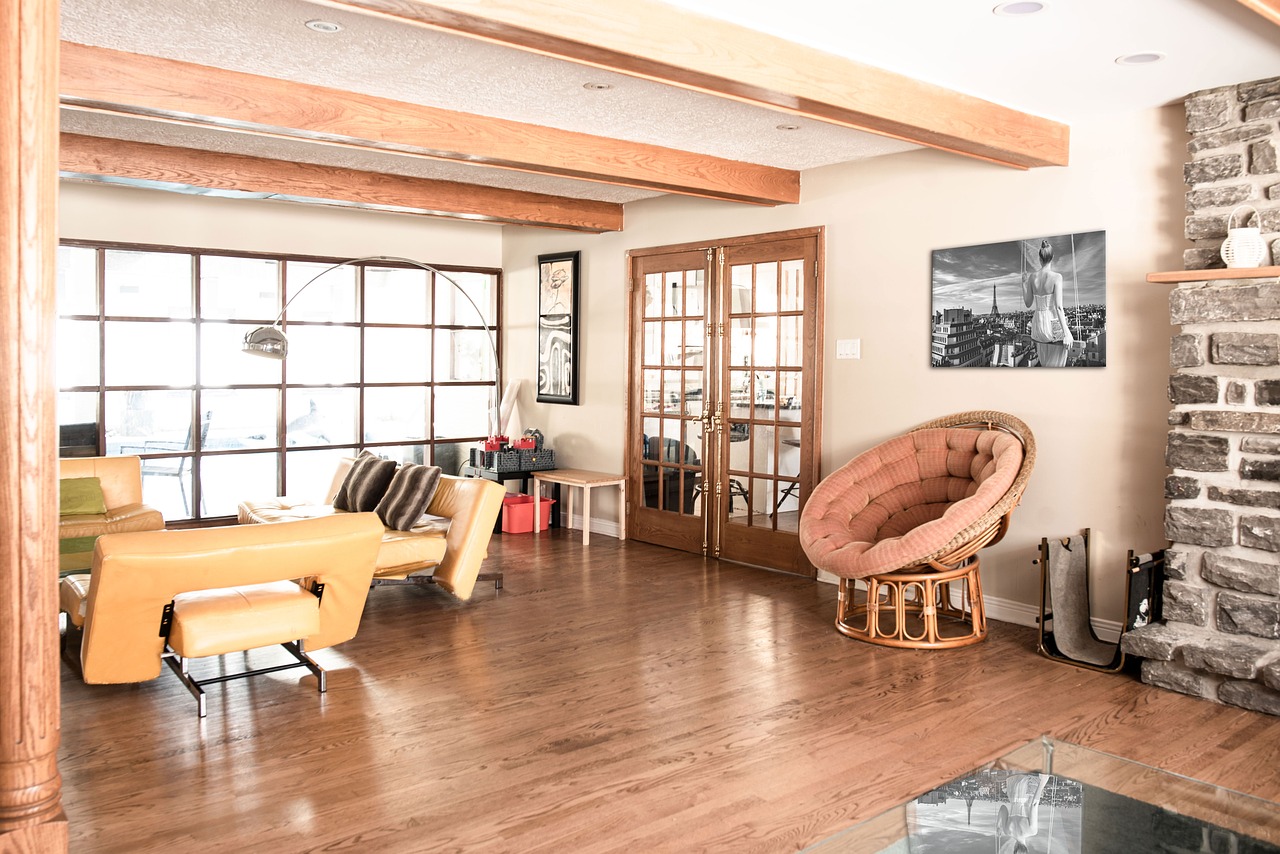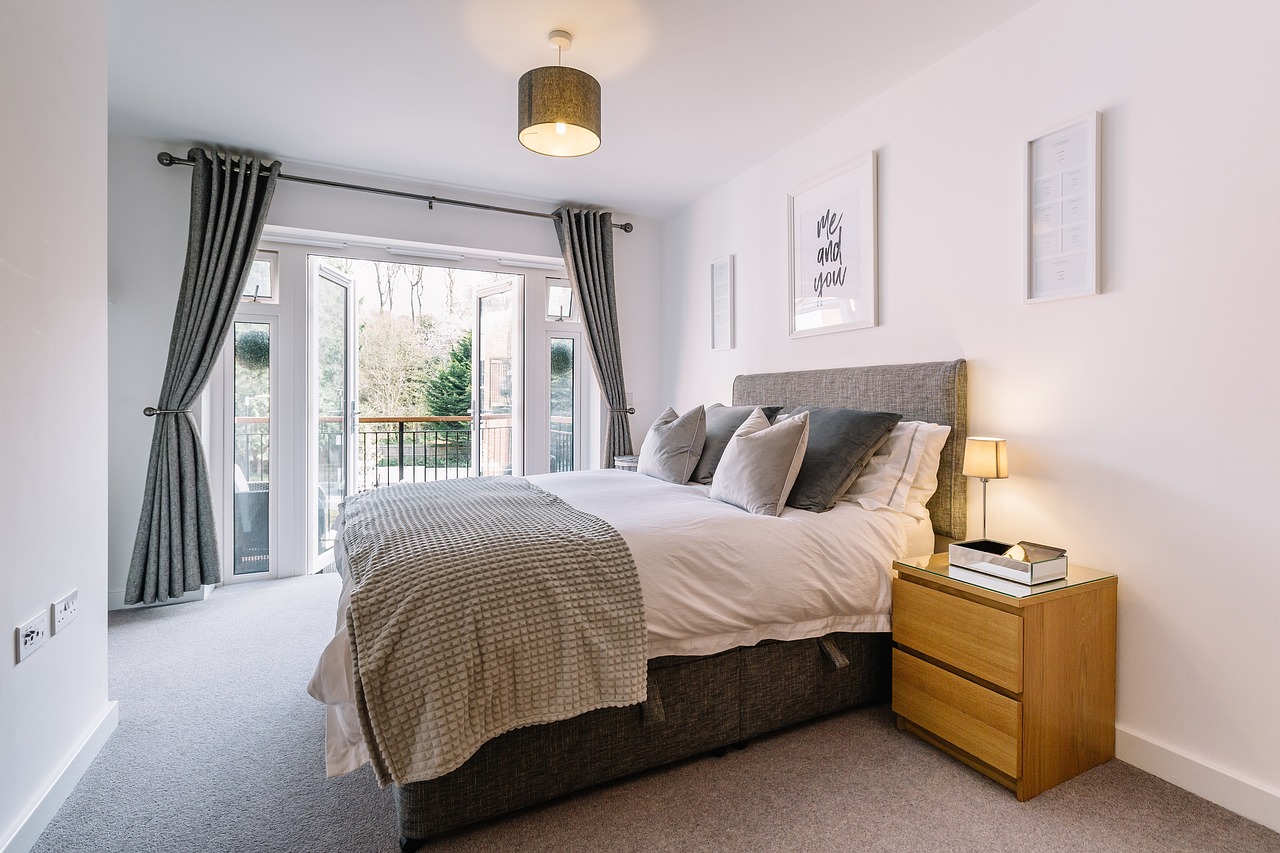How to Match Your Furniture with Your Home’s Color Scheme
Matching your furniture with your home's color scheme is a crucial aspect of interior design that can truly elevate the look and feel of your living spaces. The colors you choose for your furniture can either harmonize with the existing color palette or create a striking contrast for a bold statement. Understanding how to blend colors effectively can transform a room from ordinary to extraordinary.
When it comes to coordinating furniture colors with your home's color scheme, it's essential to grasp the basics of color theory. Colors can evoke different emotions and set the overall mood of a room. By selecting a dominant color that aligns with the existing color scheme, you can create a cohesive and visually appealing space. Consider the impact of contrasting colors to add depth and interest to the room, creating a dynamic atmosphere.
Neutral-colored furniture pieces serve as a versatile base for any color scheme, allowing you to easily switch up accent colors and accessories. Adding pops of vibrant colors through accent pieces or bold furniture choices can inject energy and personality into your home. Textures and patterns in furniture upholstery play a significant role in enhancing the overall color scheme and style of a room.
Aligning furniture styles with color choices is key to achieving a harmonious look in your home. Whether you prefer a modern, minimalist aesthetic or a cozy, traditional vibe, selecting furniture that complements the color scheme can tie the room together seamlessly. Seeking advice from interior designers or color experts can provide valuable insights and ensure that your furniture choices enhance the overall design scheme of your home.

Understanding Color Theory
Understanding color theory is essential when it comes to creating a harmonious and visually appealing interior design. Colors have the power to evoke emotions, set the mood, and even influence the perception of space within a room. By familiarizing yourself with the basic principles of color theory, you can make informed decisions when selecting furniture pieces that complement your home's color palette.
Color theory is based on the color wheel, which consists of primary colors (red, blue, yellow), secondary colors (orange, green, purple), and tertiary colors (a mix of primary and secondary colors). Understanding how these colors interact with each other can help you create a cohesive look in your living spaces. For example, complementary colors, which are opposite each other on the color wheel, can create a striking visual impact when used together.
When choosing furniture colors, consider the mood you want to achieve in each room. Warm colors like red, orange, and yellow can create a cozy and inviting atmosphere, while cool colors like blue, green, and purple can promote a sense of calm and relaxation. By selecting a dominant color that aligns with your desired mood, you can set the tone for the entire space.
Additionally, understanding the concept of color temperature can guide your furniture choices. Warm colors can make a room feel more intimate and welcoming, while cool colors can make a space appear larger and airier. By balancing warm and cool tones in your furniture selection, you can create a dynamic and balanced color scheme.
Experimenting with different color combinations and shades can also help you discover unique and unexpected pairings that add depth and character to your home. Don't be afraid to mix and match colors to create a personalized and eclectic look that reflects your individual style and personality.
By mastering the basics of color theory and applying them to your furniture selection process, you can transform your home into a beautifully curated space that is both visually stunning and cohesive. Whether you prefer a monochromatic scheme or a bold and vibrant palette, understanding color theory is the key to achieving a well-designed and harmonious interior.

Choosing a Dominant Color
When it comes to choosing a dominant color for your furniture, it's essential to consider the overall color scheme of your home. The dominant color sets the tone for the room and plays a significant role in creating a cohesive look. Think of it as the anchor that ties everything together.
One approach is to select a dominant color that already exists in your home's color palette. This could be the color of your walls, flooring, or any prominent decor elements. By choosing a color that complements the existing hues, you can create a harmonious and balanced space.
On the other hand, you may opt for a contrasting dominant color to make a bold statement. Contrasting colors can add drama and visual interest to a room, especially if the rest of the decor is relatively neutral. Just be mindful of striking the right balance to avoid overwhelming the space.
Consider the mood you want to evoke in the room. Warm colors like reds, oranges, and yellows can create a cozy and inviting atmosphere, while cool colors like blues and greens can promote a sense of calm and serenity. Think about how you want the space to feel and choose a dominant color that aligns with that intention.
Experiment with different shades and tones of the chosen color to find the perfect match for your furniture. Lighter shades can make a room feel more spacious and airy, while darker tones can add depth and coziness. Don't be afraid to mix and match to create a dynamic and layered look.

Accentuating with Contrasting Colors
Tips and tricks for coordinating furniture colors with your home's color palette to create a cohesive and stylish interior design.
When it comes to designing your living space, incorporating contrasting colors into your furniture choices can truly make a statement. Imagine a room with a neutral color scheme where a bold red sofa serves as the focal point, instantly drawing the eye and adding a pop of excitement. Contrasting colors create visual interest and can elevate the overall look of a room.

Neutral Furniture Options
When it comes to selecting furniture for your home, opting for neutral colors can be a versatile and practical choice. Neutral furniture options provide a solid foundation that can easily blend with various color schemes and design styles, ensuring flexibility and longevity in your interior decor. From classic beige and soft greys to warm browns and subtle whites, neutral hues offer a timeless appeal that can adapt to changing trends and preferences.
Neutral furniture pieces create a sense of balance and harmony in a room, allowing other elements such as wall colors, accessories, and artwork to take center stage. They act as a blank canvas, allowing you to experiment with different accent colors or textures without overwhelming the space. Whether you prefer a minimalist aesthetic or a cozy, inviting atmosphere, neutral furniture can cater to a wide range of design preferences.
Moreover, neutral colors in furniture can help create a sense of cohesion and flow throughout your home. By incorporating neutral-toned sofas, chairs, or tables, you can seamlessly connect different areas of your living space, creating a unified and cohesive look. This approach is particularly beneficial for open-concept layouts where rooms flow into one another, as neutral furniture can visually tie the spaces together.
When selecting neutral furniture options, consider the undertones of the colors to ensure they complement the existing elements in your home. Cool-toned neutrals like grey or blue can create a modern and calming ambiance, while warm-toned neutrals such as beige or taupe can add a touch of warmth and coziness to the room. Mixing different neutral shades can also add depth and dimension to your decor, preventing it from appearing flat or monotonous.
Incorporating neutral furniture options doesn't mean sacrificing style or personality. You can play with textures, materials, and shapes to add visual interest and sophistication to your space. Consider a plush velvet sofa in a soft grey hue for a touch of luxury, or opt for a sleek leather armchair in a rich brown tone for a contemporary edge. Mixing and matching different neutral pieces can create a dynamic and inviting environment that reflects your unique taste and style.

Adding Pops of Color
Adding pops of color to your interior design can truly transform the look and feel of your living spaces. By strategically incorporating vibrant and bold colors into your furniture selection, you can inject life and energy into your home. Imagine a room with neutral-toned furniture pieces as the base, and then, like fireworks in the night sky, pops of color burst forth, adding excitement and personality to the space.
One effective way to add pops of color is through accent furniture pieces such as a brightly colored accent chair, a vibrant area rug, or colorful throw pillows. These elements can serve as focal points in a room, drawing the eye and creating visual interest. Consider a sleek, neutral-toned sofa paired with a set of eye-catching, patterned throw pillows in bold hues to instantly elevate the room's aesthetic.
Another approach is to introduce colorful artwork or decorative accessories that tie into your chosen color scheme. A striking piece of art on the wall or a collection of colorful vases on a shelf can add that perfect touch of color without overwhelming the space. Think of these elements as the cherry on top of a decadent dessert, adding that final burst of flavor and visual appeal.
When selecting colors for these pops of color, don't be afraid to experiment and mix different shades and tones. Consider the mood you want to create in the room - whether it's a lively and energetic atmosphere or a calm and serene oasis. By playing with various colors and combinations, you can tailor the ambiance of each space to suit your personal style and preferences.
Remember, the key to successfully adding pops of color lies in balance and moderation. While you want these vibrant accents to stand out, they should complement the overall color scheme of the room rather than clash with it. Think of them as the exclamation points in your design narrative, emphasizing key elements and adding a touch of drama.

Considering Textures and Patterns
Tips and tricks for coordinating furniture colors with your home's color palette to create a cohesive and stylish interior design.
Basic principles of color theory and how different colors can complement or clash with each other in a room.
Guidance on selecting a dominant color for your furniture that aligns with the overall color scheme of your home.
Exploring the use of contrasting colors to add visual interest and depth to your space through furniture choices.
Benefits of incorporating neutral-colored furniture pieces to create a versatile base for any color scheme in your home.
Strategies for incorporating vibrant and bold colors into your furniture selection to bring life and energy to your living spaces.
When it comes to matching furniture with your home's color scheme, textures and patterns play a crucial role in adding depth and visual appeal to your space. Textures like velvet, leather, or linen can bring a touch of luxury or coziness to your furniture, depending on the overall ambiance you want to create. Patterns such as stripes, florals, or geometric designs can inject personality and character into your furniture pieces, making them stand out in a room.
Tips on aligning furniture styles with color choices to achieve a cohesive and harmonious look in your home.
When and how to consult with interior designers or color experts to ensure your furniture choices complement your home's color scheme effectively.

Matching Furniture Styles with Colors
When it comes to matching furniture styles with colors, it's essential to strike a balance between cohesion and visual interest in your home decor. The colors you choose for your furniture can greatly impact the overall aesthetic of a room, so it's important to consider how different styles and hues work together to create a harmonious space.
One approach to matching furniture styles with colors is to consider the overall theme or mood you want to achieve in a room. For example, if you're aiming for a modern and sleek look, you might opt for furniture in neutral tones like white, black, or grey to create a minimalist feel. On the other hand, if you prefer a more eclectic style, mixing and matching bold colors and patterns can add a playful and dynamic touch to your space.
Another factor to keep in mind is the style of the furniture itself. Traditional furniture pieces often feature rich, deep colors like mahogany or burgundy, while contemporary designs tend to favor lighter shades and clean lines. By aligning the style of your furniture with complementary colors, you can enhance the overall aesthetic of your home.
When selecting furniture styles and colors, it's also crucial to consider the size and layout of the room. Darker colors can make a space feel cozy and intimate, while lighter hues can create an illusion of openness and airiness. By understanding how different colors and styles interact with spatial elements, you can make informed choices that enhance the overall look and feel of your home.

Seeking Professional Advice
When it comes to designing your home and selecting furniture that complements your color scheme, seeking professional advice can often be a wise decision. Interior designers and color experts have a wealth of knowledge and experience in creating harmonious and visually appealing spaces. By consulting with these professionals, you can gain valuable insights and recommendations that can elevate the overall look and feel of your home.
Professional advice can be particularly beneficial when you are unsure about which colors will work best with your existing decor or when you are looking to make a significant change in your interior design. These experts can provide guidance on color combinations, furniture styles, and overall layout to ensure that your space reflects your personal style while also being cohesive and well-balanced.
Additionally, interior designers can help you navigate the vast array of furniture options available in the market, ensuring that you select pieces that not only align with your color scheme but also meet your functional and aesthetic requirements. They can offer suggestions on customizing furniture pieces, selecting upholstery fabrics, and incorporating unique design elements that will set your home apart.
By collaborating with professionals, you can save time and effort in the decision-making process, as they can streamline the selection process based on your preferences and budget. Their expertise can help you avoid costly mistakes and ensure that every furniture piece you choose contributes to the overall cohesion and beauty of your home.
Remember, seeking professional advice is not a sign of weakness but rather a proactive step towards creating a space that truly reflects your personality and style. With their help, you can transform your home into a stunning showcase of color and design that will leave a lasting impression on all who enter.
Frequently Asked Questions
- How can I determine the right color for my furniture?
Choosing the right color for your furniture involves considering your home's existing color scheme, the mood you want to create, and your personal preferences. You can start by identifying the dominant color in your space and selecting furniture that complements or contrasts with it to achieve a cohesive look.
- What are some tips for incorporating pops of color into my furniture?
To add pops of color to your furniture, you can opt for accent pieces like throw pillows, rugs, or artwork in vibrant hues. Another approach is to choose one statement furniture piece in a bold color and keep the rest of the furniture neutral to make it stand out.
- How important are textures and patterns in furniture selection?
Textures and patterns play a crucial role in adding depth and visual interest to a room. Mixing different textures like velvet, leather, or wood can create a dynamic look, while incorporating patterns such as stripes, florals, or geometric designs can enhance the overall aesthetic of your space.
- When should I seek professional advice for choosing furniture colors?
If you're unsure about selecting furniture colors or want to ensure a cohesive design, consulting with interior designers or color experts can be beneficial. They can provide guidance on color combinations, style coordination, and overall design direction to help you achieve the desired look for your home.



















